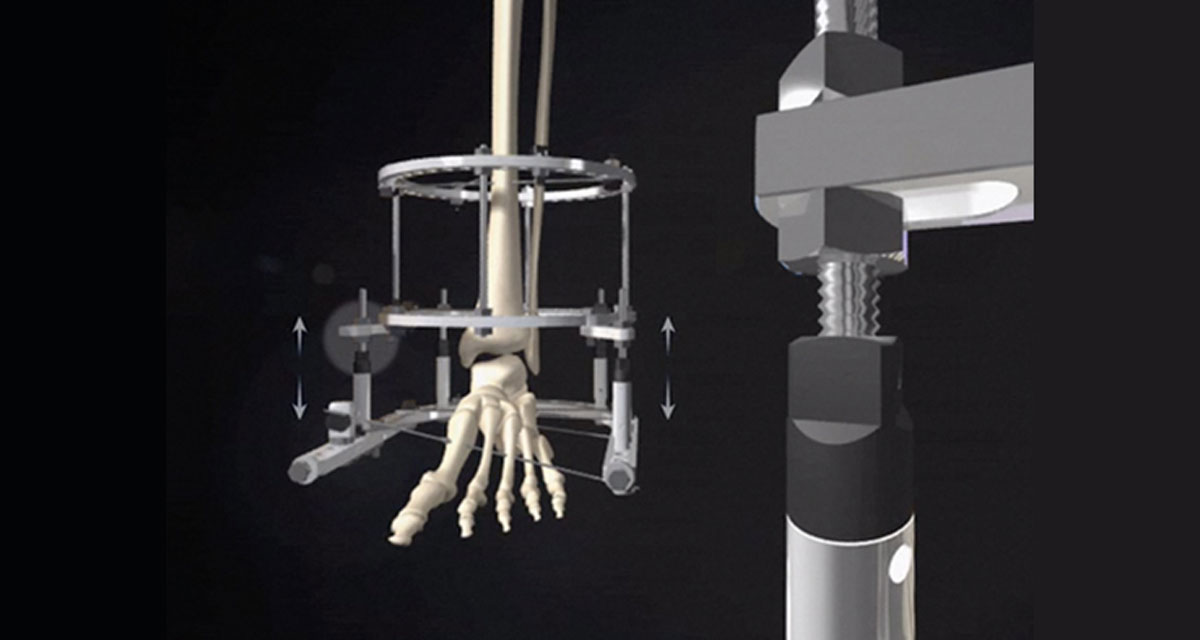Arthrodesis may be defined as the surgical immobilization of a joint by fusion of the bones. It is commonly referred to as joint fusion, also known as artificial ankylosis or syndesis. It can be performed in several parts of the body, and it is indicated in the presence of painful joints, often due to arthritis or osteoarthritis, with highly compromised mobility.
The word arthrodesis comes from Greek, meaning “the act of binding together”, and the first known use of the term was in 1888, after Heuster and Lampugnani had separately performed this technique on a hip joint in 1885.(1) Arthrodesis is generally chosen when conservative therapies to treat osteoarthritis have failed. It is considered the gold standard for end-stage osteoarthritis of the first metatarsophalangeal joint (MTPJ) causing hallus rigidus, and it is a common operation for correction of rheumatoid hindfoot and ankle deformity. On the contrary, it is an infrequent procedure – considered as the last resort – in the hip or knee, due to the positive outcomes which generally derive from primary or secondary arthroplasty.
In the knee, if arthrodesis is performed after a major trauma with some bone loss, or after the removal of a joint prosthesis, compression between opposite surfaces can be achieved utilizing either a monolateral Orthofix external frame – a single XCaliber fixator applied anteriorly, or two fixators applied both anteriorly and laterally – or a circular fixator. In all cases stabilization and arthrodesis in a position of 15° flexion is possible.
In the hip, arthrodesis with a monolateral external frame such as a ProCallus fixator can be performed using the Trauma Garches Clamp as a modular attachment. In this case three screws are inserted through the clamp into the pelvis, with other three screws inserted into the femur through a standard straight ProCallus clamp. The Trauma Garches clamp may be used together with the Limb Recontruction System, if limb lengthening has to be performed.
In the ankle, arthrodesis may be performed for the treatment of the most severe form of arthritis, and when deformity is present. It can be a limb salvage procedure in patients with end-stage pathologic conditions of the ankle joint. Compression arthrodesis can be achieved with either internal or external fixation, but with internal fixation infection must be cleared before the placement of the definitive hardware. Depending on the severity of the condition requiring fusion, the Orthofix Ankle Hindfoot Nailing (AHN) is a treatment option. Using external fixation may provide earlier and higher fusion rates and decreases the chance of complications, especially soft tissue infections.(2) As in the knee the surgeon may use either a monolateral or a circular external frame. If the quality of the bone is good, a medially placed XCaliber fixator can be used. If the quality of the bone is poor, a circular external frame (e.g. TrueLok Ring Fixator System) may provide a better and safer support.
References
- Bardakos NV, Villar RN 2011. History and Evolution of Hip Surgery, in Sekiya JK, Safran M et al (Eds). Techniques in Hip Arthroscopy and Joint Preservation Surgery. Elsevier; Chapter 1:2-8.
- Rabinovich RV, Haleem AM et al. 2015. Complex ankle arthrodesis: Review of the literature. World J Orthop; 6(8):202-613.

